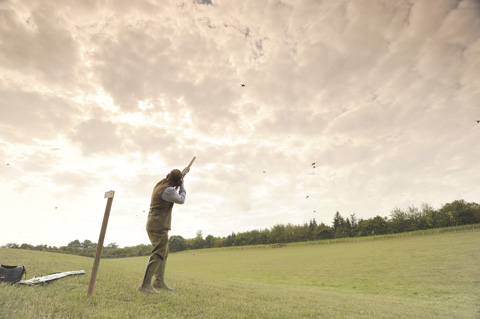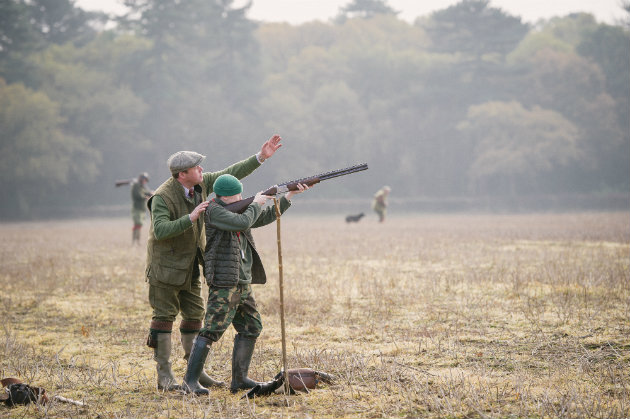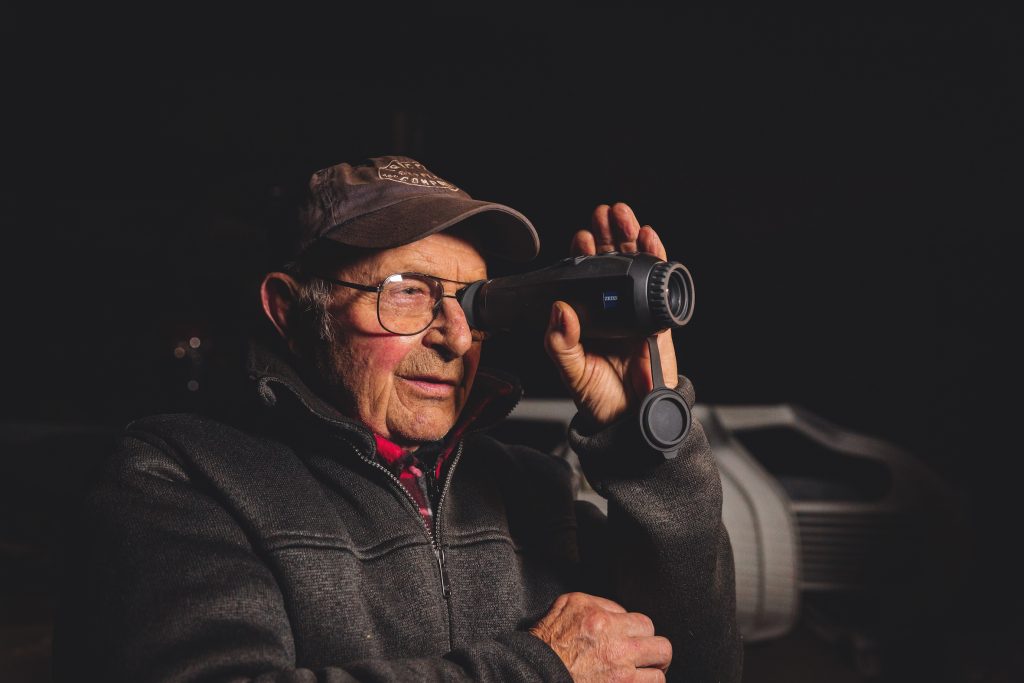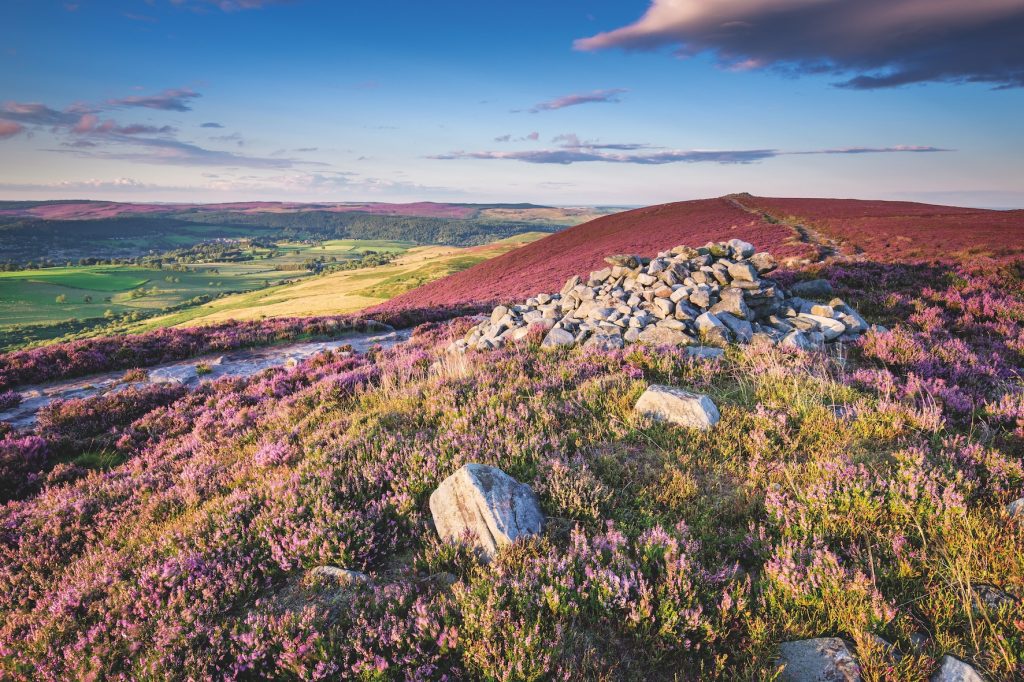Knowing how to hold a shotgun – known as gun mount – will go a long way towards making you…
Win CENS ProFlex DX5 earplugs worth £1,149 – enter here
Where I should place my hand on the fore-end of a shotgun? (And other related questions)
I have just come in to shooting and I am getting a bit confused about where I should place my hand on the fore-end wood? I have seen shooters holding it at the front, while others hold it quite close to the back.
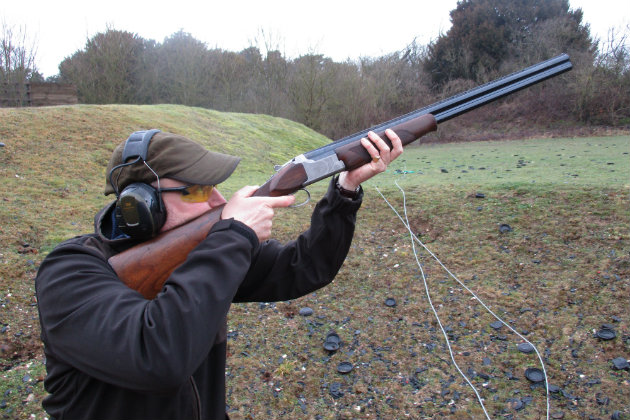
Q: What’s the right hand position on a shotgun?
A: Your leading hand should be placed on the fore-end slightly forward of the middle, but still allowing the leading arm to have a slight bend in it. Shooting with a straight leading arm will limit your swing in certain areas. It was suitable in times gone by for shooting low driven birds.
Try to keep a bend in the leading hand, but if you find your hand too far forward, you may be compensating for a stock that is too short. If you find your hand too far back, close to the action, you could be compensating for a stock that is too long. Experiment and find what suits you.
If you have your hand too close to the action you will find it hard to control the line as you will have a lot of weight in front of the leading hand. Too far forward and you may find it impedes your swing. I have known people who adjust their hold point depending on the target but I feel being consistent will give better results.
Q: Which type of fore-end is best on a shotgun?
A: John Bidwell says: As someone who prefers to shoot Sporting and Skeet I would choose the slimmer Schnabel because it puts my forward hand closer to the barrels and therefore the axis of the gun.
This help direct the muzzles to a target when the moving gun is brought to the shoulder.
Fore-ends with a wider beavertail shape come into their own for the trap disciplines where the gun is pre-mounted before a bird is called, but for all other shooting where instinctive reactions are needed to align the barrels to a fast-moving target, then a slimmer Schnabel is best.
This happy state of affairs is more easily attained when both hands (not just the one controlling the fore-end wood) are as near to the centre of the gun as possible.
Q: Will changing my hand position help my clayshooting?
A: John Bidwell says: Some shooters find that on long, slowish, crossers it helps if they move their hand slightly farther up the fore-end, or closer to the action when dealing with a short, nippy, target that’s close to the stand.
They argue that the longer reach creates a steadier, more deliberate, swing whereas the shorter hold allows them to move the muzzles more quickly in a shorter space.
Try it if you think it might help your clayshooting
Occasionally I might bring my hand back a little when shooting, say, a fast, close, rabbit but generally I keep the same hold for all birds – that’s because my maintained lead technique (Move, Mount, Shoot) demands that the gun moves and mounts at the same speed regardless of how fast the target is moving, or the angle of its flight.
In other words it doesn’t rely on speed of swing to hit the target so it helps to keep that leading hand in the same position for every bird.
How to improve your shooting accuracy
How to improve your shooting accuracy: How can you hit the ground running next season? Season experts give their hints…
How mental discipline can improve your shooting
Phil Coley on the pychology of shooting
Q: When gameshooting what’s the best way to hold the gun?
A: John Bidwell says: When shooting I hold the gun by the grip of the stock with the barrels pointing skyward and the butt lightly resting against my hip. This will spread some of the gun’s weight and stops my arms getting tired.
There’s nothing wrong waiting with the gun over your crocked forearm, but when a bird does head your way the barrel muzzles have to move quite a long way to be brought into alignment with the bird.
And in the case of a bird suddenly appearing overhead, for instance in a narrow woodland ride, it’s unlikely you will be able to get on it before it passes the line and disappears behind.
On the other hand, with the barrels pointing skyward, it takes just a fraction of a second to grip the fore-end and then direct the muzzles to an on-coming bird.
This neat, short, movement can be completed without you taking your eyes off the target as you move your feet just before starting to mount the gun and swing.
Related Articles
Get the latest news delivered direct to your door
Subscribe to Shooting Times & Country
Discover the ultimate companion for field sports enthusiasts with Shooting Times & Country Magazine, the UK’s leading weekly publication that has been at the forefront of shooting culture since 1882. Subscribers gain access to expert tips, comprehensive gear reviews, seasonal advice and a vibrant community of like-minded shooters.
Save on shop price when you subscribe with weekly issues featuring in-depth articles on gundog training, exclusive member offers and access to the digital back issue library. A Shooting Times & Country subscription is more than a magazine, don’t just read about the countryside; immerse yourself in its most authoritative and engaging publication.






